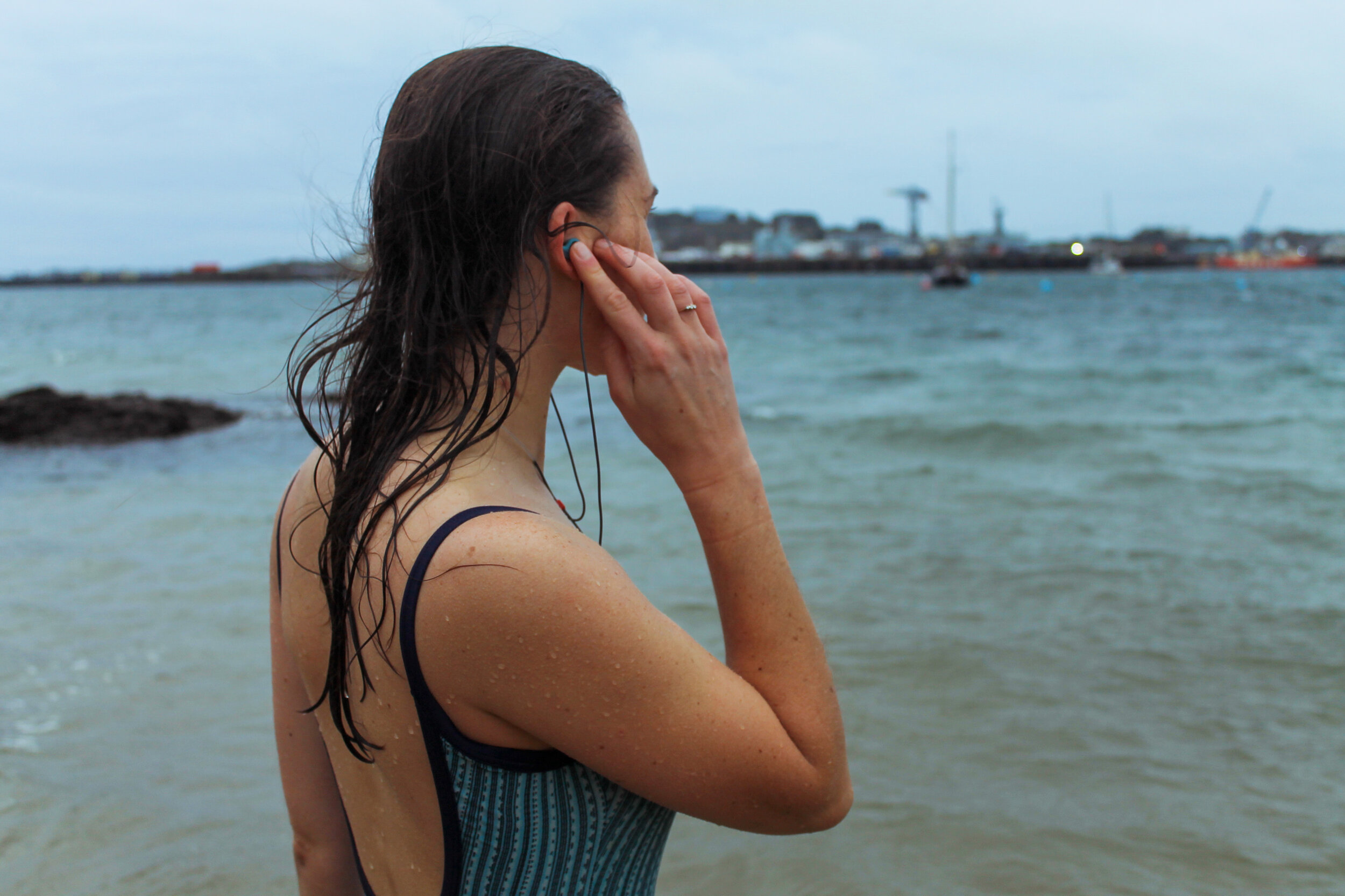How to tell if you’ve got ‘Swimmer’s Ear’ and what to do about it
Words by Lydia Paleschi
For anyone spending time in the water there is a risk of both Swimmer’s Ear and Surfer’s Ear – particularly in cold water and during the winter months. Each of these conditions has different causes and symptoms which will be outlined in this blog, but both can be extremely painful. However, like all things, by taking the necessary precautions risk can be averted.
When it comes to your ears, ear plugs are the main solution (see our recommendation at the bottom of this post), but there are a number of other things you can do too.
Swimmer’s Ear
Swimmer’s Ear is an infection in the outer ear canal which runs from the eardrum to the outside of the head. Recognisable by redness and soreness of the ear, plus warmth and a feeling like the ear is blocked, it’s pretty easy to recognise. If it’s left untreated you can also experience hearing loss, itchiness and a mucousy discharge (no thanks). It’s best to head to your GP straight away if you have any of these symptoms, otherwise the infection can spread deeper and become even more painful.
Studies have been made that indicate that at least 10 percent of the population will have at least one case of ‘Swimmer’s ear’ during their lifetime.
Causes
There are a number of causes for Swimmer’s Ear, but generally it involves either warm water or a foreign body entering the ear leading to the growth of bacteria. Water removes wax from the ear canal, which is designed to prevent anything from entering it and trapped water creates a warm, moist environment perfect for bacteria or fungi to grow in.
You’re more likely to get Swimmer’s Ear in warm or tropical climes, but it’s still possible to get it in the UK. It can also be caused by exposure to chemicals and heat such as hairspray and hairdryers.
Treatment
The usual treatment is a series of antibiotic ear drops which will clear the infection up within seven to ten days.
Prevention
There are a number of things that can be done to prevent Swimmer’s Ear, which are listed below:
Check the Safer Seas Service App to ensure you aren’t swimming in polluted water and heightening exposure to bacteria (you should do this every time before you swim anyway)
Wear ear plugs to protect your ears and prevent water from entering into them
Wear a swimming cap or hood to provide an extra layer of protection
Dry year ears off as soon as you leave the water
Wear ear plugs to protect your ears and prevent water from entering into them
Surfer’s Ear
Quite different to Swimmer’s Ear, Surfer’s Ear involves the growth of bone (exostosis) in the ear canal due to exposure to cold water and/ or wind. This leads to a narrowing of the ear canal, making it more likely that water will get trapped and leaving you at a higher risk of infection.
Some are more susceptible to Surfer’s Ear than others, therefore there is no specified time period it takes for problems to arise. It is much more common than realised because people suffer from it to varying degrees with the worst case scenario being hearing loss, severe pain and/or tinnitus (a ringing in the ear). Furthermore, sometimes people don’t realise they have it until they travel to warmer climates (e.g. for a holiday) and experience infections.
Surfer’s Ear involves the growth of bone (exostosis) in the ear canal due to exposure to cold water and/ or wind.
Causes
Whilst called Surfer’s Ear, in reality this is a risk for anyone undertaking any water-based activities – whether above, on, or below the water’s surface (this includes sailing, diving, kayaking etc.). Exposure to water and wind leads to bone within the ear canal growing to protect the eardrum. Even if you decide to stop getting into the water, the bone has been known to continue to grow.
Treatment
If Surfer’s Ear gets so bad that you have repeated infections, hearing loss or pain there is a requirement for surgery, which is meant to be incredibly painful. This involves either drilling or chiselling the bone out.
Prevention
There are a number of things that can be done to prevent Surfer’s Ear, which are listed below:
Wear ear plugs to protect your ears and prevent water from entering into them
Wear a swimming cap or hood to provide an extra layer of protection
Our recommendation for ear plugs
We’ve been using SurfEars 3.0 since they came out a couple of years ago and haven’t looked back since. We use them for both swimming and surfing because they not only stop water and wind from getting into your ears, but you are also able to hear when wearing them. Another reason we like them is because they come with a selection of changeable parts in different sizes that allow you to customise them for your ears in order to find a comfortable and secure fit. Plus, they come with a leash and a cool case so that you’re less likely to lose them in or out of the water.
Please note that this is an affiliate link. If you purchase Surf Ears through this link, we get 10% commission (this does not affect the purchase price).
If you enjoyed this blog, why not sign up to our newsletter?
And if you know someone else who would enjoy it, please share it with them via email or social media.




